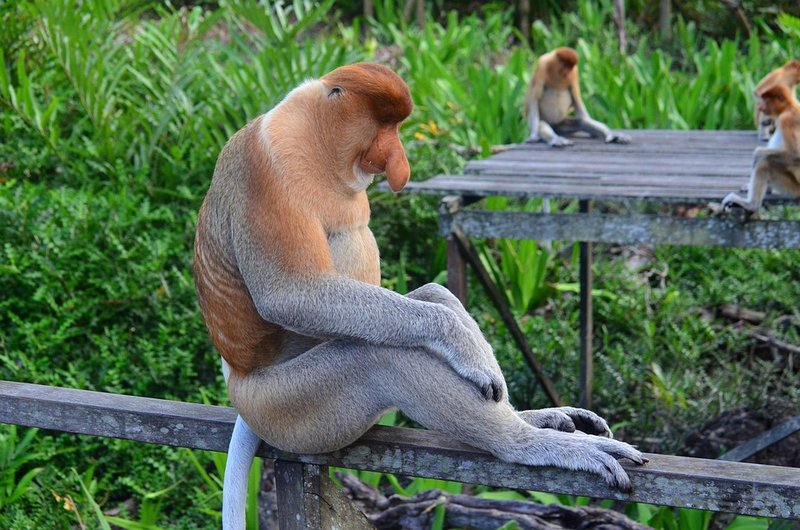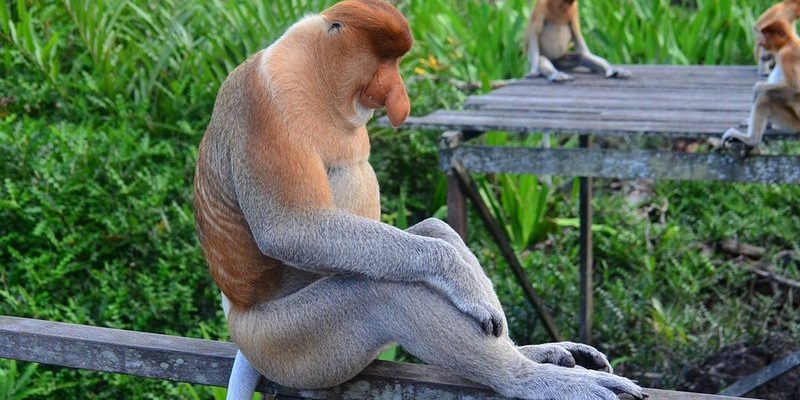
Proboscis monkeys, known for their distinctively large noses, are more than just a quirky sight. Their habitat isn’t just a walk in the park—it’s a wet, humid jungle fraught with challenges. From finding food to evading predators, these monkeys have developed fascinating adaptations. Think of them as the ultimate survivors in a wild, unpredictable reality show where the stakes are living another day. Let’s dive into how they’ve mastered the art of survival.
Adaptations to the Rainforest Environment
Living in the dense rainforests of Southeast Asia, proboscis monkeys have developed several adaptations to handle the unique conditions. These adaptations range from their dietary choices to their social behaviors.
One of the most significant adaptations is their diet. Proboscis monkeys are primarily leaf eaters, which may seem limiting, but here’s the thing: leaves are plentiful! They feast on the leaves of various trees, which are not only abundant but also provide essential nutrients. Their specialized stomachs ferment the tough plant material, allowing them to extract maximum energy. It’s like having a built-in recycling system for the tough stuff that others can’t handle.
Additionally, they have longer limbs and strong hands that help them navigate the treetops with ease. This is crucial because avoiding ground predators, like crocodiles, is vital to their survival. By staying high up in the canopy, they can find food while keeping a safe distance from potential threats.
Social Structure and Group Living
Proboscis monkeys are highly social creatures, often found in groups that range from 10 to 30 individuals. This social structure isn’t just for companionship; it plays a key role in their survival. Living in groups helps them keep watch for predators. With more eyes scanning the environment, individual monkeys are less likely to become prey.
You might be wondering how they communicate within these groups. Proboscis monkeys have a variety of vocalizations—from loud honks to softer calls. This range of sounds helps them maintain contact with each other while foraging or alerting the group of potential dangers. Imagine a bunch of friends at a concert, cheering and calling out to each other amidst the crowd; that’s how these monkeys operate in the jungle!
Their social living also helps with parenting. Female proboscis monkeys typically give birth to a single offspring, and in a group setting, mothers can benefit from the support of other females. This communal care helps ensure that the young monkeys can thrive as they learn and grow.
Water Adaptability and Lifestyle
One of the most fascinating aspects of proboscis monkey survival is their close relationship with water. These monkeys are semi-aquatic; they love to swim! You might see them take a dip to cool off or use their swimming skills to cross rivers. This adaptability isn’t just for fun; it’s a practical survival tactic. Water not only provides hydration but also serves as a refuge from predators.
Their webbed toes make swimming easier, allowing them to navigate through water smoothly. You could liken it to toddler-sized humans gracefully learning to swim—they splash and play, but they also use their skills for survival. Proboscis monkeys often forage near riverbanks, where they can access both food and water.
Moreover, the dense foliage near water sources provides additional cover, making it a safer environment for both foraging and resting. This blend of swimming abilities and strategic habitat choice speaks volumes about how these monkeys have evolved to thrive.
Dealing with Predators
Every animal has its list of predators, and for proboscis monkeys, it’s a mix of birds of prey, reptiles, and even larger mammals. To survive, they rely heavily on their social structure and keen senses. But there’s more to it than just keeping watch.
When a predator is spotted, proboscis monkeys make alarm calls that alert the rest of the group. Honestly, it’s a team effort. This sort of coordinated response helps them escape or conceal themselves quickly. Think of it as a fire drill at school—everyone knows where to go when danger strikes!
Additionally, their preferred habitats help them avoid danger. By spending most of their time high up in the trees or near water, they can evade ground-dwelling threats. They also use their agility to leap through branches quickly, making it more challenging for predators to catch them. It’s a constant game of hide and seek, with survival as the ultimate prize.
The Impact of Habitat Destruction and Conservation Efforts
Despite their incredible adaptations, proboscis monkeys face severe threats from habitat destruction due to logging and palm oil cultivation. As their homes shrink, their chances of survival diminish. This is a stark reminder of how interconnected our world is. Just like you’d protect your favorite coffee spot from going out of business, protecting these monkeys’ habitats is crucial for their continued existence.
Conservation efforts are underway to protect the remaining populations of proboscis monkeys. Organizations are working to raise awareness about the importance of preserving their habitats and reducing illegal logging activities. You might even see eco-tourism initiatives that promote visiting these areas responsibly, ensuring that local communities benefit while protecting wildlife.
Collaborative efforts also involve educating locals and providing them with alternative income options. This helps reduce the economic pressure to destroy forests in search of quick profits. It’s all about finding a balance—people can thrive alongside nature, and that’s a win-win.
In Conclusion: A Testament to Nature’s Ingenuity
Proboscis monkeys are truly remarkable beings, showcasing nature’s ingenuity in adapting to harsh environments. From their unique dietary habits to their social structures and swimming abilities, they’ve carved out a niche in one of the most biodiverse places on Earth.
Yet, the challenges they face are significant. It’s essential that we continue to support conservation efforts and foster a respect for the habitats that these monkeys and many other species rely on. Every little bit helps, whether it’s supporting sustainable practices or simply sharing knowledge about these incredible creatures.
Next time you hear about proboscis monkeys, think of the resilience and adaptability they bring to the table. They’re not just surviving; they’re thriving against the odds, teaching us a thing or two about living harmoniously with the environment.

